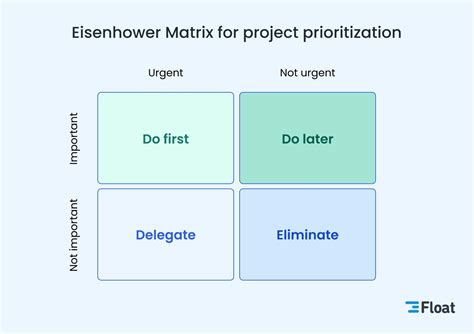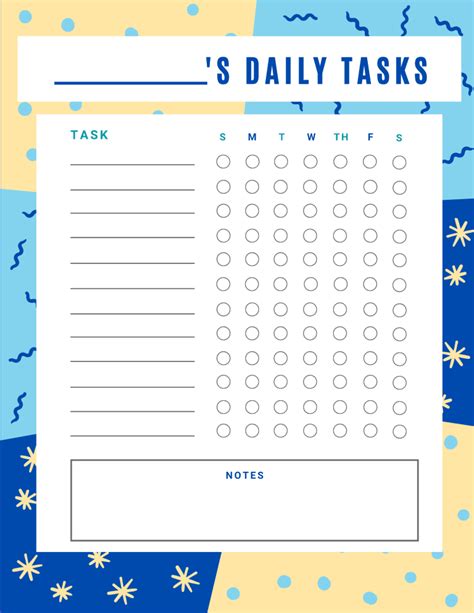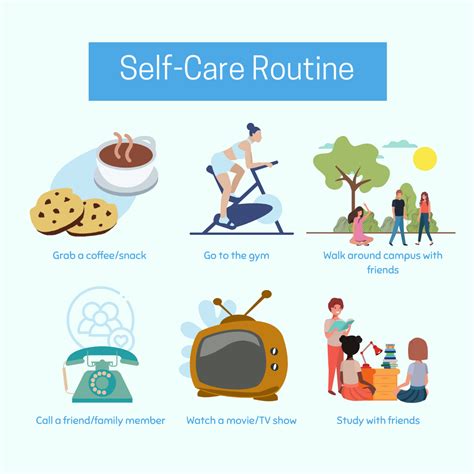In the fast-paced and dynamic environment of today's professional world, the ability to effectively manage one's time is paramount to achieving success and maintaining a competitive edge. Time, being our most precious resource, demands a strategic approach that goes beyond mere clock watching. It requires the cultivation of habits and practices that optimize productivity and enrich personal and professional growth.
Unleashing the Power of Priorities
At the core of effective time management lies the art of prioritization. By identifying the tasks and responsibilities that carry the most value and align with our goals, we can allocate our time and energy where they matter the most. This involves making tough choices, saying "no" to less important endeavors, and focusing our efforts on what will truly make a difference in our work and overall productivity.
The Power of Focus and Concentration
In today's era of constant notifications and distractions, the ability to maintain focus and concentration is a skill that can set individuals apart. By implementing strategies to reduce interruptions and creating dedicated blocks of uninterrupted time, employees can immerse themselves fully in their work, achieving a state of flow that enhances both efficiency and the quality of output.
Prioritize Your Tasks
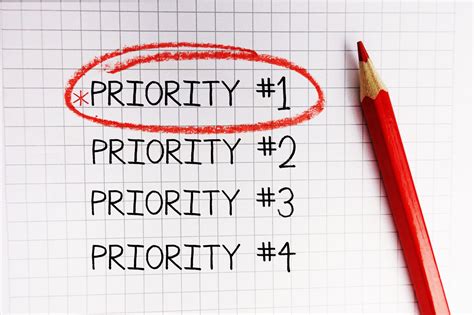
Focus on arranging your duties in order of importance and urgency to make the most effective use of your time at work. By prioritizing your tasks, you can ensure that you address the most crucial and time-sensitive assignments first, allowing you to maximize your productivity and meet your goals efficiently.
1. Identify and categorize tasks: Start by identifying all the tasks on your plate and categorizing them based on their significance, deadlines, and level of effort required. This will help you gain a clear understanding of the workload and aid in determining which tasks should take precedence. |
2. Determine urgency and importance: Assess each task's urgency and importance by considering factors such as deadlines, impact on business objectives, and potential consequences of delays. By clearly understanding the urgency and importance levels, you can prioritize accordingly. |
3. Establish a priority framework: Create a priority framework based on the urgency and importance levels determined earlier. It can be a simple system of categorizing tasks as high, medium, or low priority, or you can use a more sophisticated method, such as the Eisenhower Matrix. This framework will guide your decision-making process when it comes to managing your tasks. |
4. Consider deadlines and dependencies: Take into account task deadlines and any dependencies between tasks. If a task has a tight deadline or is a prerequisite for other tasks, prioritize it accordingly to ensure timely completion of the entire project. This way, you can prevent bottlenecks and potential delays. |
5. Re-evaluate and adjust priorities: Regularly review and re-evaluate your task priorities as new information or circumstances arise. Flexibility is key to effective time management, so be prepared to adjust your priorities based on changing requirements or unexpected developments. |
Setting Achievable Objectives
Enhancing productivity and maximizing efficiency in a professional setting encompasses various aspects of effective time utilization. One crucial element of optimizing time management involves setting realistic goals. By establishing attainable objectives, individuals can focus their efforts and allocate their time wisely, ultimately increasing their productivity and job satisfaction.
Defining Clear Goals:
When establishing objectives, it is imperative to define them clearly and precisely. This clarity enables individuals to understand what they are aiming to achieve and how to direct their time and resources accordingly. By setting specific and well-defined goals, employees can eliminate ambiguity and stay focused on accomplishing tasks efficiently without wasting valuable time on unnecessary activities.
Considerating Realistic Timeframes:
It is important to consider realistic timeframes when setting goals, taking into account factors such as workload, deadlines, and the complexity of tasks. Setting unattainable timeframes can lead to stress, burnout, and compromised quality of work. By assessing one's capabilities and limitations, individuals can allocate an appropriate amount of time for each objective, ensuring that they are achievable within the given constraints.
Breaking Goals into Manageable Steps:
Overwhelming goals can be daunting and discouraging, making it difficult to effectively manage time. Breaking down ambitious objectives into smaller, manageable steps can significantly enhance time management. By dividing large tasks into smaller subtasks, individuals can create a clear roadmap and distribute their time and efforts accordingly. This approach fosters a sense of accomplishment as each subtask is completed, boosts morale, and drives overall productivity.
Flexibility and Adaptability:
While it is crucial to set realistic goals, it is also essential to remain flexible and adaptable. Conditions and priorities in the workplace can change unexpectedly, requiring individuals to adjust their goals accordingly. Embracing flexibility allows for the efficient allocation of time and resources based on changing circumstances. By reevaluating and readjusting goals, individuals can maintain optimal time management while staying focused on the most pressing priorities.
Celebrating Success:
Recognizing and celebrating achievements is vital for motivation and maintaining a positive mindset. After accomplishing each objective, individuals should take the time to acknowledge their success and celebrate milestones. This practice not only boosts morale but also provides an opportunity to evaluate the effectiveness of time management strategies and refine them for future objectives.
Overall, setting realistic goals plays a pivotal role in effective time management. By defining clear objectives, considering realistic timeframes, breaking goals into manageable steps, embracing flexibility, and celebrating success, individuals can enhance their productivity, job satisfaction, and overall work-life balance.
Avoid the Pitfalls of Juggling Multiple Tasks Simultaneously

When it comes to managing your time effectively, one important aspect to consider is the potential drawbacks of multitasking in the workplace. While it may seem productive to tackle several tasks at once, this approach can often lead to decreased efficiency and compromised outcomes.
- Focus on One Task at a Time: Instead of attempting to juggle multiple tasks simultaneously, prioritize and dedicate your attention to one task at a time. By doing so, you allow yourself to fully focus and give your best effort to each individual task.
- Avoid Distractions: Multitasking often opens the door to distractions. To stay on track, eliminate or minimize potential distractions such as social media notifications, personal phone calls, or excessive noise in the workplace.
- Allocate Time for Priorities: Instead of trying to do everything at once, identify your most important tasks and allocate specific time blocks dedicated solely to those priorities. This way, you can ensure that crucial tasks receive the necessary focus and attention they deserve.
- Enhance Productivity through Time Blocking: Implementing a time-blocking strategy can be highly effective in preventing multitasking. By assigning specific time slots for different tasks or categories of work, you can maintain a structured and focused approach, ultimately boosting productivity.
- Delegate and Collaborate: If you find yourself overwhelmed with multiple tasks, consider delegating or collaborating with colleagues. Sharing the workload can alleviate stress, enhance efficiency, and allow each team member to fully concentrate on their respective responsibilities.
While multitasking may appear to be an efficient way to tackle multiple tasks, it often hinders productivity and can lead to subpar results. By avoiding the pitfalls of multitasking and focusing on one task at a time, eliminating distractions, allocating time for priorities, implementing time-blocking strategies, and seeking appropriate assistance, you can effectively manage your time in the workplace and achieve optimal outcomes.
Delegate When Possible
Enhancing productivity through effective distribution of tasks.
One key aspect of expertly managing time in the professional setting is knowing when and how to delegate responsibilities. Delegation involves entrusting specific tasks or projects to appropriate individuals or teams within an organization. This practice allows for optimal utilization of resources, enhances efficiency, and promotes collaboration.
Delegating tasks involves identifying the right person for the job based on their skills, strengths, and expertise. By assigning tasks to capable individuals, managers can free up their own time to focus on higher-level priorities and strategic decision-making. Delegation not only lightens the workload of individuals, but it also fosters a sense of empowerment and trust among team members.
Effective delegation demands clear communication and setting realistic expectations. It is crucial to provide detailed instructions, deadlines, and desired outcomes to the delegated individual or team. Regular check-ins and open lines of communication ensure that tasks are progressing as planned and allow for timely interventions if necessary.
Delegating when possible is a valuable time management technique that permits individuals and organizations to make the most efficient use of available resources. It empowers employees, promotes collaboration, and enhances overall productivity. By trusting others with tasks that match their abilities, managers can focus their energy on strategic initiatives and propel the organization towards success.
Limiting Disturbances
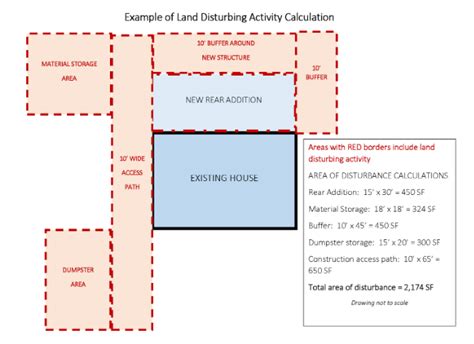
Enhancing productivity and efficiency in the work environment requires the ability to focus and concentrate on tasks without being frequently interrupted or distracted. This section provides effective strategies for minimizing disturbances and creating a more conducive atmosphere for optimal work performance.
- Avoid multitasking: Instead of juggling multiple tasks simultaneously, prioritize and tackle each task one at a time. By concentrating on one task, you can maximize your attention and minimize the chances of getting distracted.
- Establish a quiet zone: Designate specific areas within the workplace where individuals can work uninterrupted. This allows employees to retreat to a quiet space whenever they need to focus on complex or demanding tasks.
- Implement technology boundaries: Turn off notifications and alerts on your devices, or customize them to receive only essential updates. This way, you can prevent constant interruptions and stay focused on the task at hand.
- Practice effective communication: Encourage colleagues to respect each other's time and avoid unnecessary disruptions. Establish clear guidelines for when it's appropriate to approach someone for assistance or conversation, to minimize distracting interruptions.
- Schedule specific time for focused work: Allocate blocks of time in your schedule dedicated solely to concentrate on important tasks. During these periods, inform colleagues about your unavailability, turn off non-essential communication channels, and fully engage in your work.
- Organize your workspace: Maintain a clutter-free and organized workspace to reduce visual distractions. Keep only essential materials within reach and remove unnecessary items that may divert your attention.
By implementing these strategies to minimize distractions, individuals can create an environment conducive to improved concentration, enhanced productivity, and efficient time management in the workplace.
Take Regular Breaks
Refresh your mind and enhance productivity by incorporating regular intervals of rest into your daily work routine. It is crucial to allocate designated periods for breaks throughout the workday to maintain focus and prevent burnout. Taking breaks allows your brain to recharge, improves concentration, and promotes effective time management.
1. Time Allocation: Distribute your breaks strategically throughout the day to maximize their impact. Instead of long, uninterrupted hours of work, try incorporating short breaks of 5-10 minutes every hour. Additionally, plan for longer breaks of 20-30 minutes every 2-3 hours to provide adequate relaxation and rejuvenation. |
2. Engage in Physical Activity: During your breaks, engage in physical activities such as stretching, walking, or light exercise. These activities not only help in reducing physical strain but also improve blood circulation and increase alertness, leading to enhanced productivity. |
3. Mental Relaxation Techniques: Utilize your breaks to practice relaxation techniques such as deep breathing, meditation, or mindfulness exercises. These techniques promote a sense of calmness and reduce stress levels, allowing you to return to your tasks with a clear mind and improved focus. |
4. Social Interaction: Take advantage of your breaks to engage in social interaction with colleagues. Building positive relationships in the workplace can enhance team dynamics, increase motivation, and provide a sense of camaraderie. Engaging in a brief conversation or sharing a laugh during your breaks can significantly improve overall job satisfaction. |
5. Unplug from Technology: Avoid spending your break time solely glued to electronic devices. Instead, disconnect from emails, messages, and social media. Allow yourself some screen-free time to unwind, reflect, and recharge. This practice helps reduce mental fatigue and increase your ability to stay focused and engaged when returning to work. |
By incorporating regular breaks into your work routine, you can optimize your productivity, maintain a healthy work-life balance, and effectively manage your time throughout the day. Remember, taking breaks is not a sign of laziness but a strategic approach to achieve higher efficiency and overall well-being in the workplace.
FAQ
How can I effectively manage my time at work?
To effectively manage your time at work, start by creating a schedule or to-do list. Prioritize your tasks based on urgency and importance, and try to eliminate any non-essential tasks. Additionally, set specific goals and deadlines for yourself, and avoid multitasking as it can decrease productivity. Finally, take regular breaks and make sure to create a work-life balance to avoid burnout.
What are some strategies for improving time management skills at work?
There are several strategies you can employ to improve your time management skills at work. One is to break down large tasks into smaller, more manageable ones, and tackle them in a systematic way. Using technology tools, such as productivity apps or project management software, can also help you stay organized and focused. Additionally, learning to delegate tasks and saying "no" to unnecessary commitments can free up more time for important responsibilities.
How can I avoid distractions and stay focused on my work?
Avoiding distractions can be challenging, but there are strategies to help. Firstly, create a designated workspace that is free from distractions and preferably away from high-traffic areas. Put your phone on silent or in another room to minimize interruptions. Use time-blocking techniques, where you allocate specific time slots for different tasks, to stay disciplined and focused. Finally, practice self-discipline by setting boundaries with colleagues and politely declining non-essential meetings or interruptions.
What are the benefits of effective time management in the workplace?
Effective time management in the workplace brings several benefits. It helps increase productivity and efficiency, as tasks are completed in a timely manner. It also reduces stress and prevents burnout, as work is organized and manageable. Good time management allows for better work-life balance, as you can allocate time for personal activities and hobbies. It also improves overall job satisfaction and can lead to career growth opportunities.
How can I overcome procrastination and become more productive at work?
To overcome procrastination and improve productivity at work, start by identifying the reasons behind your procrastination. Break tasks into smaller steps, and set realistic deadlines for each step to create a sense of urgency. Use time management techniques, such as the Pomodoro Technique, where you work for a set amount of time and then take a short break. Additionally, find motivation by visualizing the rewards or positive outcomes of completing the task. Finally, eliminate distractions and create a conducive work environment to stay focused.




